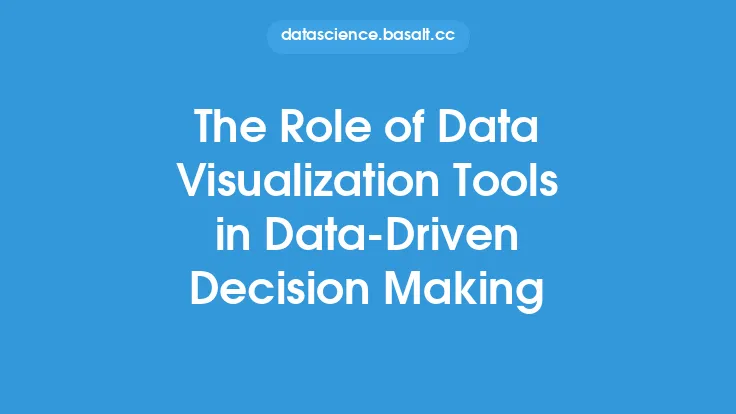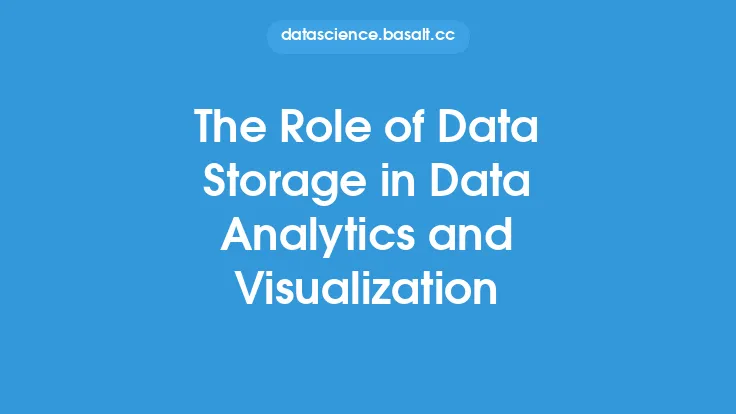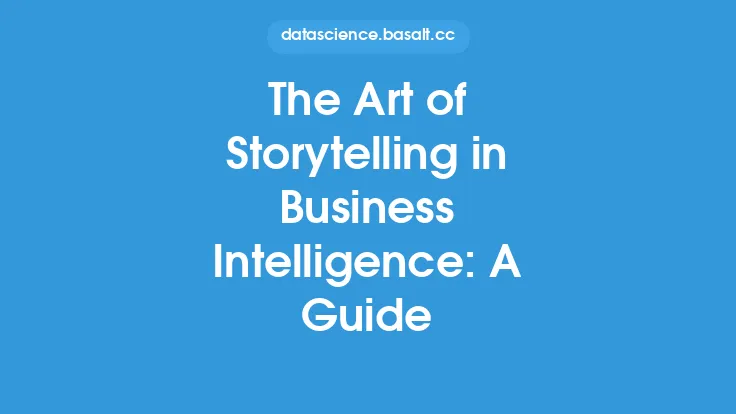The ability to effectively visualize data is a crucial aspect of business intelligence, as it enables organizations to extract insights and meaning from large and complex datasets. Visualization in business intelligence refers to the use of graphical representations to communicate information and support decision-making. It involves the use of various visual elements, such as charts, graphs, maps, and tables, to display data in a way that is easy to understand and interpret.
Introduction to Visualization Techniques
There are several visualization techniques that are commonly used in business intelligence, including data visualization, information visualization, and scientific visualization. Data visualization focuses on the use of visual representations to communicate data insights and support decision-making. Information visualization, on the other hand, involves the use of visual representations to communicate complex information and support knowledge discovery. Scientific visualization is a technique that is used to visualize complex data and models, often in fields such as engineering and physics.
Types of Visualizations
There are several types of visualizations that are commonly used in business intelligence, including:
- Static visualizations: These are visualizations that do not change or update in real-time. Examples of static visualizations include reports, dashboards, and scorecards.
- Interactive visualizations: These are visualizations that allow users to interact with the data in real-time. Examples of interactive visualizations include drill-down capabilities, filtering, and sorting.
- Dynamic visualizations: These are visualizations that update in real-time as new data becomes available. Examples of dynamic visualizations include real-time dashboards and alerts.
- Geospatial visualizations: These are visualizations that use maps and geographic information to display data. Examples of geospatial visualizations include heat maps and geographic information systems (GIS).
Visualization Tools and Technologies
There are several visualization tools and technologies that are commonly used in business intelligence, including:
- Tableau: A data visualization tool that allows users to connect to a variety of data sources and create interactive visualizations.
- Power BI: A business analytics service that allows users to create interactive visualizations and business intelligence reports.
- D3.js: A JavaScript library that is used to create dynamic and interactive visualizations.
- Matplotlib: A Python library that is used to create static and interactive visualizations.
Best Practices for Visualization
There are several best practices that should be followed when creating visualizations in business intelligence, including:
- Keep it simple: Visualizations should be easy to understand and interpret. Avoid using complex visualizations that may be difficult for users to understand.
- Use color effectively: Color can be used to draw attention to important information and to differentiate between different data points.
- Use labels and annotations: Labels and annotations can be used to provide additional context and information about the data.
- Test and refine: Visualizations should be tested and refined to ensure that they are effective and easy to use.
Common Visualization Mistakes
There are several common mistakes that are made when creating visualizations in business intelligence, including:
- Using too much data: Visualizations should only include the data that is necessary to support the insight or decision.
- Using the wrong type of visualization: Different types of visualizations are better suited to different types of data and insights.
- Not considering the audience: Visualizations should be designed with the target audience in mind.
- Not testing and refining: Visualizations should be tested and refined to ensure that they are effective and easy to use.
Future of Visualization in Business Intelligence
The future of visualization in business intelligence is likely to involve the increased use of advanced technologies, such as artificial intelligence and machine learning. These technologies will enable organizations to create more sophisticated and interactive visualizations, and to automate the process of creating visualizations. Additionally, the use of virtual and augmented reality is likely to become more prevalent in business intelligence, as these technologies enable organizations to create immersive and interactive visualizations.
Conclusion
In conclusion, visualization is a critical aspect of business intelligence, as it enables organizations to extract insights and meaning from large and complex datasets. By using various visualization techniques, tools, and technologies, organizations can create effective visualizations that support decision-making and drive business success. By following best practices and avoiding common mistakes, organizations can ensure that their visualizations are effective and easy to use. As the field of business intelligence continues to evolve, it is likely that visualization will play an increasingly important role in supporting decision-making and driving business success.





